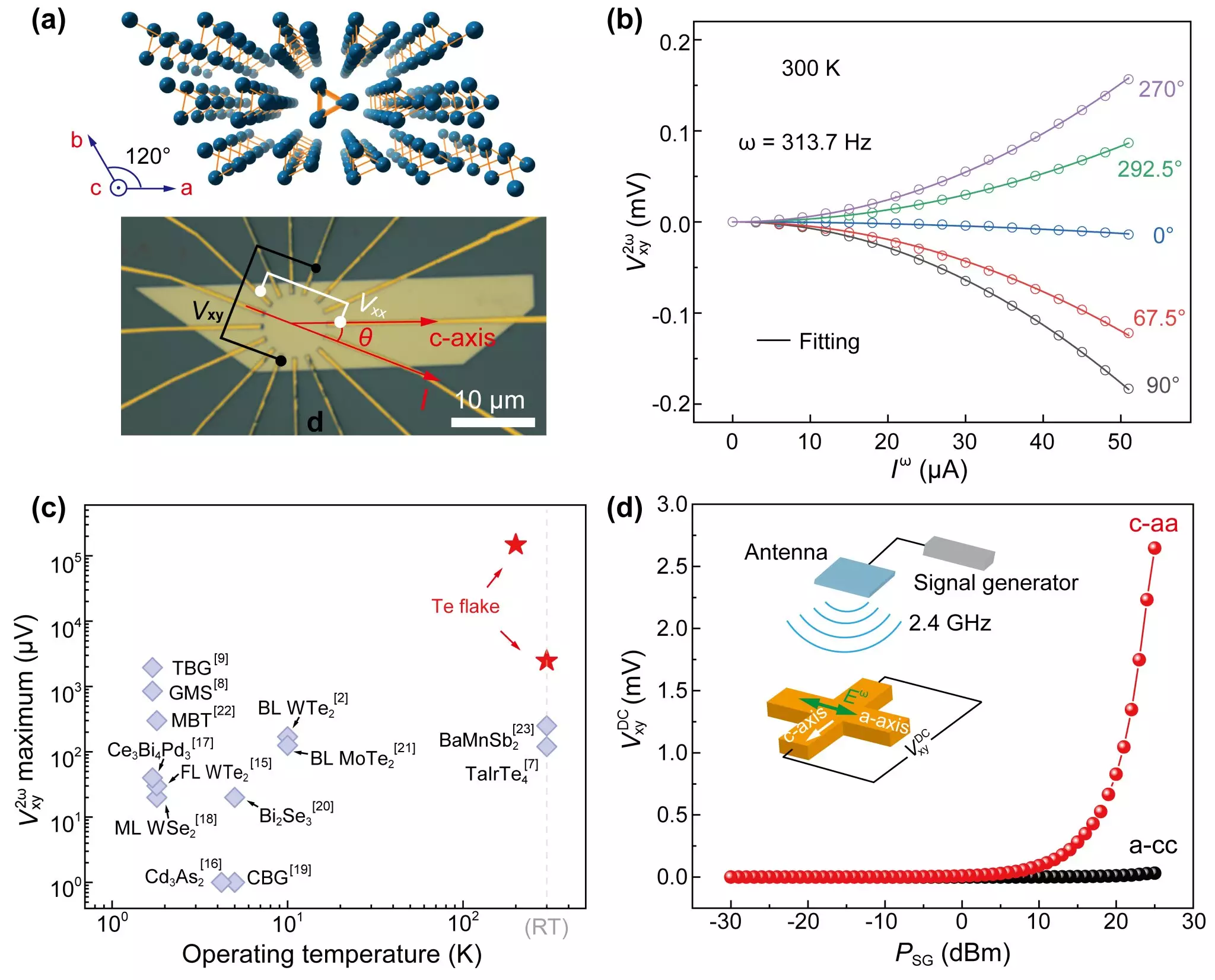Recent advancements in the field of semiconductor research have spotlighted tellurium (Te) as a game-changing material due to its remarkable nonlinear Hall effect (NLHE). This phenomenon, alongside the achievement of wireless rectification capabilities at room temperature, has sparked widespread interest in the scientific community. Documented in the prominent journal Nature Communications, this breakthrough promises to overcome previous limitations associated with NLHE, such as low voltage outputs and the need for extremely low operational temperatures.
The nonlinear Hall effect represents a compelling second-order response to applied alternating currents (AC). Unlike traditional Hall effects, which generally require an external magnetic field, NLHE can generate second-harmonic signals, providing tremendous opportunities for advancements in frequency-doubling technologies and the implementation of efficient rectifying devices. Despite the promising applications, previous studies have primarily focused on materials that exhibited poor performance metrics, often limited to experimental conditions that rendered practical applications virtually impossible.
In a notable shift from earlier explorations, a research team led by Professor Zeng Changgan and Associate Researcher Li Lin from the University of Science and Technology of China concentrated their efforts on tellurium. This elemental semiconductor stands out due to its unique one-dimensional atomic structure, which possesses inherent properties that break inversion symmetry. The team’s thorough investigations revealed that Te thin flakes exhibited significant NLHE at room temperature, achieving a remarkable peak second-harmonic output of 2.8 mV at 300 K—a substantial increase compared to previously documented results.
Further experiments and theoretical examinations unveiled that the impressive NLHE observed in tellurium thin flakes arises largely from extrinsic scattering mechanisms. The structural symmetry breakage pivotal to the thin flake configuration allowed for better modulation of the Hall voltage outputs through the application of external gate voltages, thereby enhancing solutions for frequency-doubling applications. This understanding not only deepens the scientific community’s comprehension of nonlinear transport phenomena but also underscores the potential of Te as a technologically advantageous semiconductor.
In an even more significant development, the research team transitioned from typical AC currents to the implementation of radiofrequency (RF) signals. Their innovation showcased stable rectified voltage outputs across an extensive frequency range from 0.3 to 4.5 GHz. This capability distinguishes tellurium-based Hall rectifiers from conventional designs that depend on p-n junctions or metal-semiconductor interfaces, which often limit operational breadth and efficiency. The promise of a broadband response under zero bias means that this technology is poised to revolutionize energy harvesting and wireless charging methodologies.
The research cultivates a deeper understanding of nonlinear transport phenomena and places tellurium as a focal point for future studies into advanced electronic devices. With its demonstrated potential for high performance at room temperature and innovative wireless solutions, tellurium represents a pivotal breakthrough for the development of cutting-edge technologies in energy management. The implications of this research extend beyond traditional semiconductor applications, heralding a new era of device innovation that prioritizes efficiency and versatility. The work of Prof. Zeng Changgan’s team signals significant advancements not just for tellurium, but for the broader field of semiconductor physics and its applications.


Leave a Reply